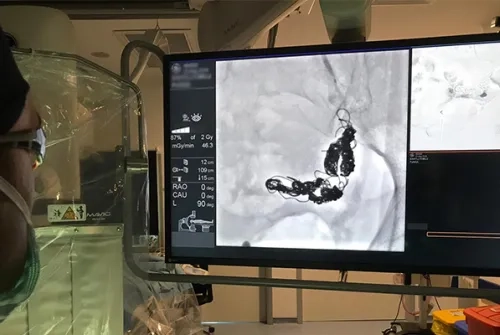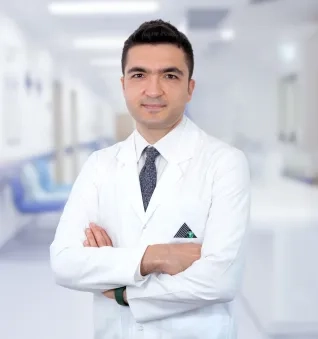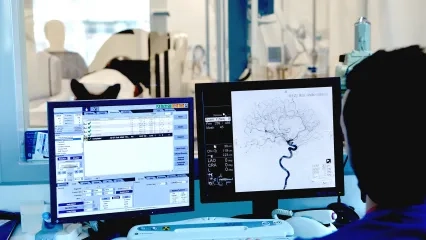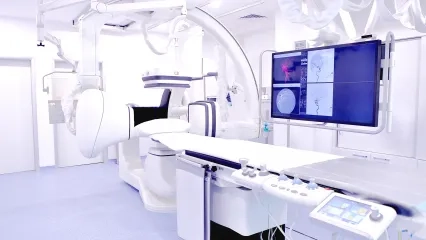Alo Yeditepe
Alo Yeditepe
Interventional Radiology is Used in Many Fields
Interventional radiology treatment is used in the treatment of many diseases in the brain, from aneurysms (vascular bubbling) to diabetic foot (foot wounds due to diabetes)
Stating that interventional radiology treatment is used in the treatment of many diseases, Yeditepe University, Faculty of Medicine, Department of Radiology, Interventional Radiologist and Neuroradiologist said, "Technically, we use alternative treatments for surgery in cases where surgery is not possible or when the patient cannot tolerate the surgery. Since some of these treatments have proven themselves clearly in the face of surgeries over the years, there are treatments that we consider as a priority from surgery."
Vascular Diseases of the Brain Are at the Forefront
Pointing out that the main disease group in interventional neuroradiology is vascular diseases of the brain, our specialist said, "Among them, aneurysm (bubble) treatments are the leading ones. In addition, 'vascular lumps' called arteriovenous malformation (AVM) are among the diseases we contribute to in treatment. It will be much more accurate for a neuroradiologist who has a knowledge of brain anatomy to perform this treatment in cases where drugs and surgery cannot be preferred, especially in jugular vein stenosis in the brain and neck veins. We are applying vascular occlusive treatments that feed some appropriate brain and head and neck tumors."
"Paralysis can be prevented by timely intervention in acute stroke"
Stating that one of the most important treatment areas of interventional neuroradiology is the treatment of acute stroke, our specialist said, "In this case, which means sudden blockage in the cerebral vessels, stroke or other obstacles can be prevented by saving the brain tissue with timely intervention. We are referring here to treatments for all vascular occlusions or constrictions other than the brain and heart. Especially leg vascular occlusions and diabetic foot interventions are very important. Varicose veins and vein occlusions are also common in society and solutions can be offered with interventional radiology. Sometimes patients need a central line. Procedures called central catheters (such as port catheters in cancer patients or dialysis catheters in patients with renal failure) are also performed by interventional radiology."
"Myoma and prostate can be treated"
Our specialist stated that it is possible to treat all myomas with a single session in women and stated that the treatment has started to be applied in prostate growth, which is frequently seen in men at an advanced age, in recent years.
Stating that tissue or cells can be obtained from many points of the body without the need for surgery today with interventional radiology treatment, our specialist said:
"These can be done daily under the guidance of imaging. With the interventions for the biliary tract and urinary tract, we can remove the obstructions here. We can find solutions to the patient's nutritional problems. In addition, under the guidance of imaging, we can apply burning treatments to the tumor tissue by reaching the tumor pointwise. These treatments, called percutaneous ablation, can also benefit some bone, lung, and kidney tumors, mostly liver tumors. We successfully apply ablation treatment as an alternative to surgery in thyroid nodules, which are quite common in society. Interventional radiology can also provide solutions for pain with local interventions, especially for cancer patients."
The Achievements of Interventional Radiology
- Treatments can be performed under the guidance of imaging through the needle hole without any incision or suture.
- Except for neuroradiological treatments, most treatments in interventional radiology can be applied without the need for general anesthesia. Patient comfort is tried to be kept at maximum with sedation and local anesthesia.
- In most cases, patients can be sent home on the same day.
- Less risk than with surgery.
- The return to normal life and working life is much shorter.
This content was prepared by Yeditepe University Hospitals Medical Editorial Board.
”
See Also
- Radioembolization in Liver Tumor Treatment
- Diagnosis and Treatment of Acute Stroke
- The Cause of Abdominal Pain Has Not Been Found for Years... Varicose Veins Appeared in Her Ovary
- Interventional Methods in the Treatment of Acute Stroke
- What Diseases Is Interventional Radiology Used For?
- What is a Brain Aneurysm?
Alo Yeditepe




